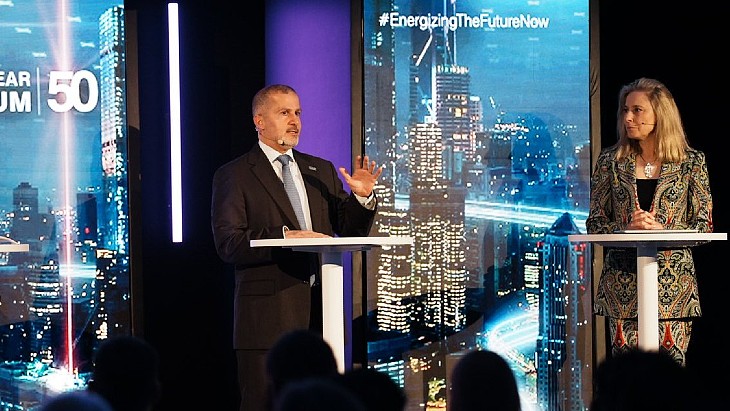The fifth nuclear power reactor at Russia's Kursk plant will berecommended for completion. It was initially ordered in 1985 but still remains only 70% finished.
At a meeting at the plant on 18 January, the Russian Duma's Energy, Transport and Communications Committee made a preliminary decision to recommend to the government that the inclusion of Kursk 5 be on the General Power Reactors Deployment Scheme to 2020 (roadmap). The roadmap will be finalised by 31 March.
The allocation of 19.522 billion roubles ($734 million) to fund completion was also recommended. The Federal Atomic Energy Agency (Rosatom) has promised 1 billion roubles ($38 million) from its own development fund.
On 24 January, another committee meeting took place at the plant. Rosatom director general Sergei Obozov commented on the unique character of the plant, which will probably spend about 25 years as the only RBMK-design unit in operation as older units are retired. According to reports in Nuclear.ru, he said that fears of operational and maintenance problems were exaggerated: "There wont be problems with fuel or equipment issues." He also said that Kursk 5 was a third generation RBMK, "substantially different" from Chernobyl 4, which was destroyed in 1986.
At the construction site of Kursk 5, all civil engineering has been completed, as well as the assembly of major components such as the reactor pressure vessel. Two 550 MWe steam turbines are in place along with the auxiliary systems of the reactor and turbine buildings.
Kursk plant manager, Yuri Slepokon, said on 25 January: "As of today, the cost of Kursk 5 completion is estimated at 20 billion roubles ($754 million), its dismantling would cost 30 billion roubles ($1.1 billion)."
It is hoped that the unit could eventually enter service in 2010, to supply much needed energy in central Russia. Valeri Yazev, the Duma committee's chair, said it was important to reduce the amount of coal- and gas-fired generation and increase the amount of nuclear electricity.
However, before Kursk might supply electricity, the local transmission grid infrastructure must be renewed.
Additional high-voltage transmission lines would be required to provide electricity flows between the Central Russian grid and that for the Moscow region so that Kursk 5's power might be delivered there. In addition, it was proposed by the committee that the Ministry of Industry and Energy (Minpromenergo) and the Ministry of Economic Development and Trade (Minekonomrazvitiya) engage with the grid management company, RAO UES, in the contruction of a pumped storage hydroelectric plant on the Kursk site in a bid to meet peaking demands in the Central Russia grid.
Further information
WNA's Nuclear Power in Russia information paper
Kursk 5 set for completion
The fifth nuclear power reactor at Russia's Kursk plant will be recommended for completion. It was initially ordered in 1985 but still remains only 70% finished.




_23621.jpg)

_63865.jpg)
_18570.jpg)





